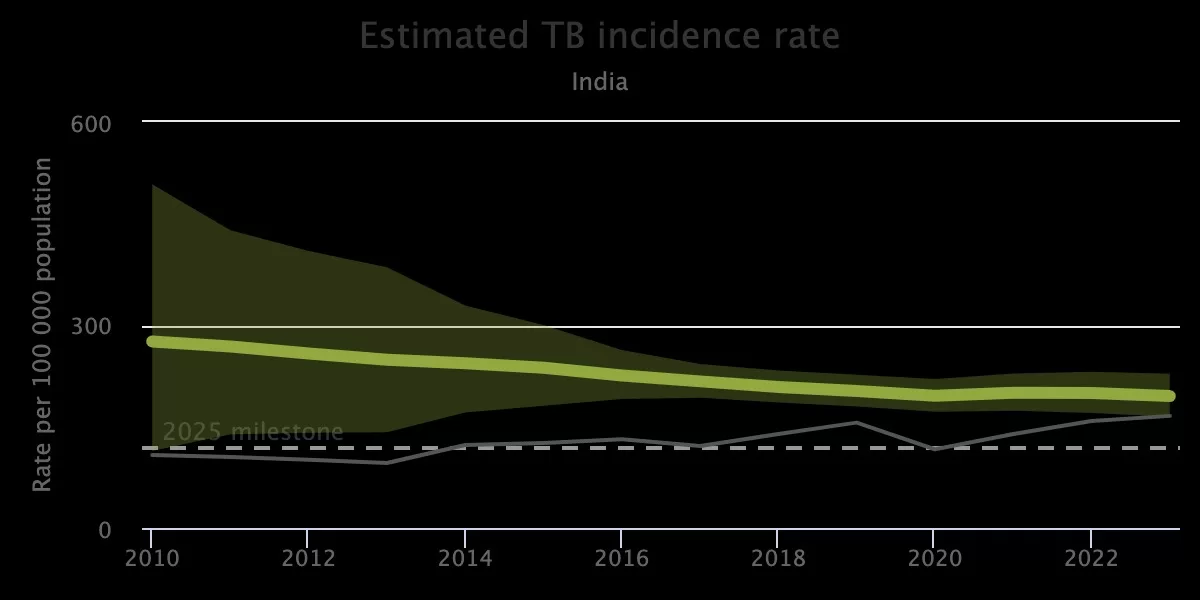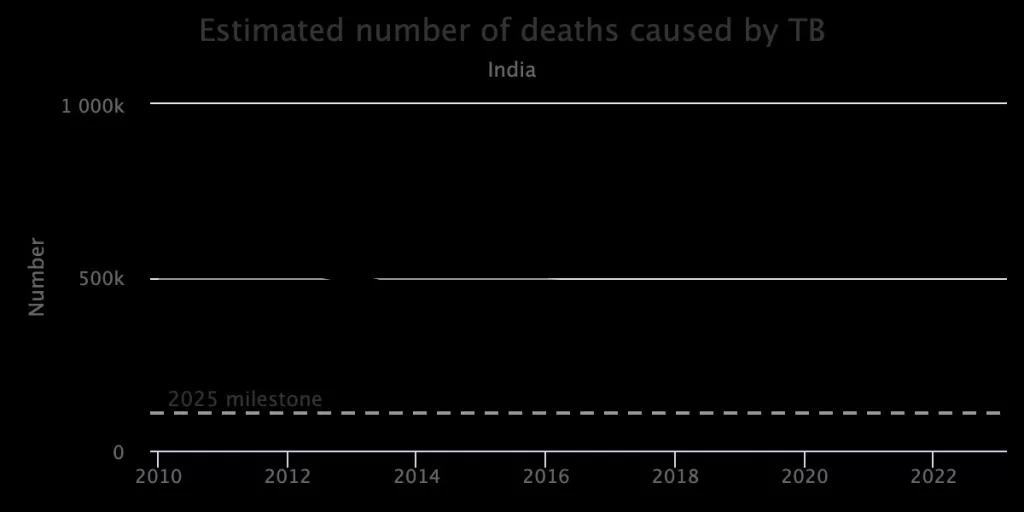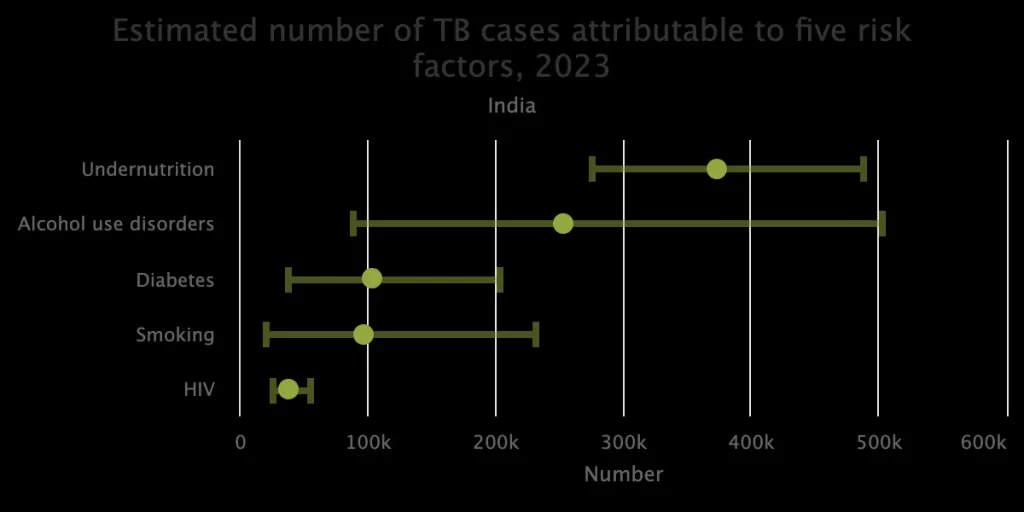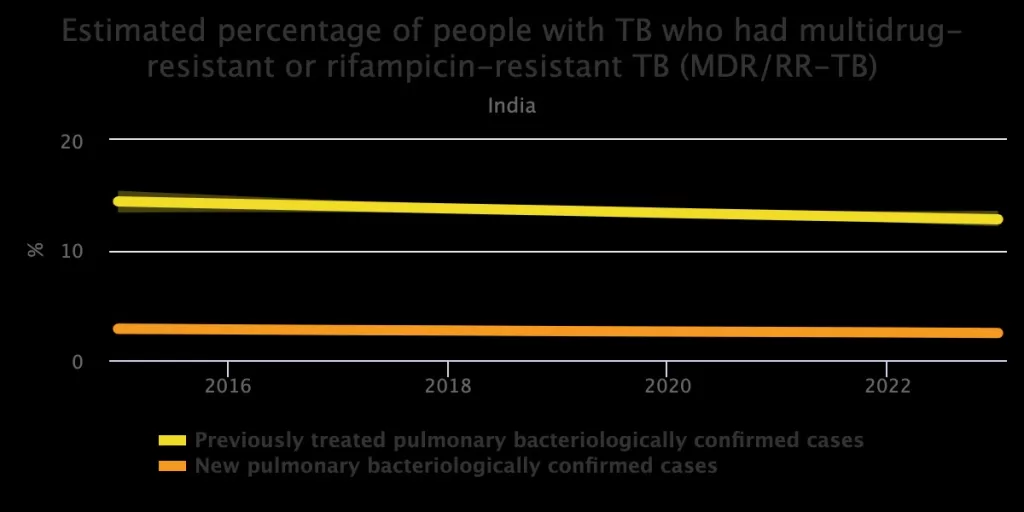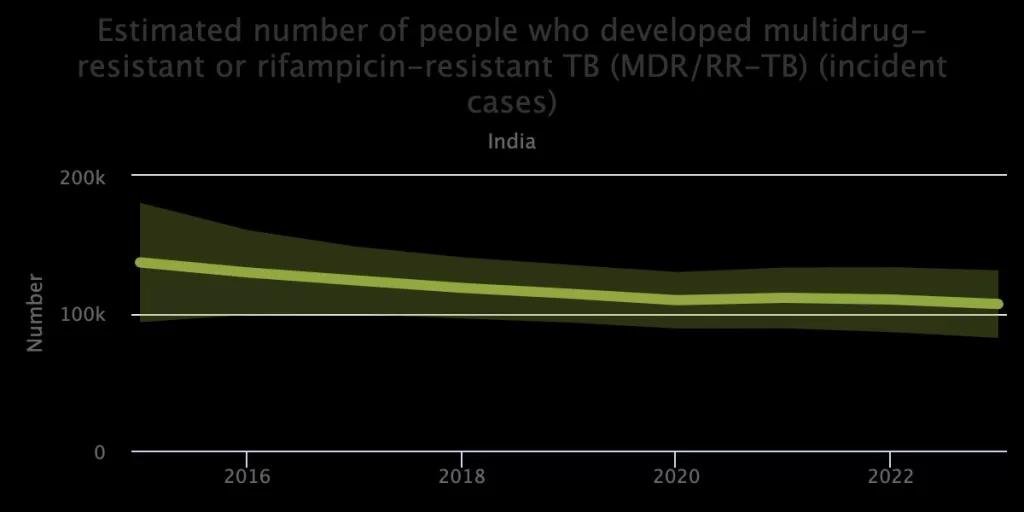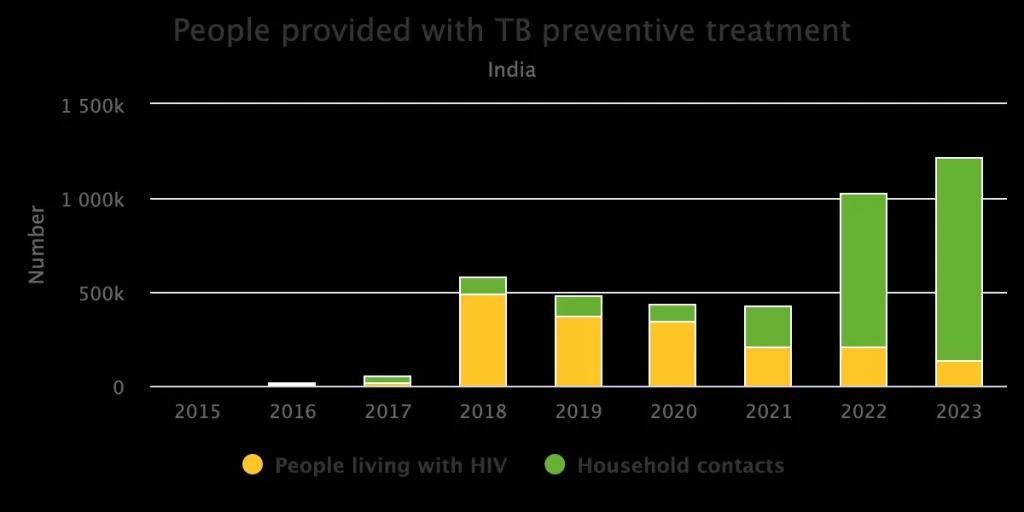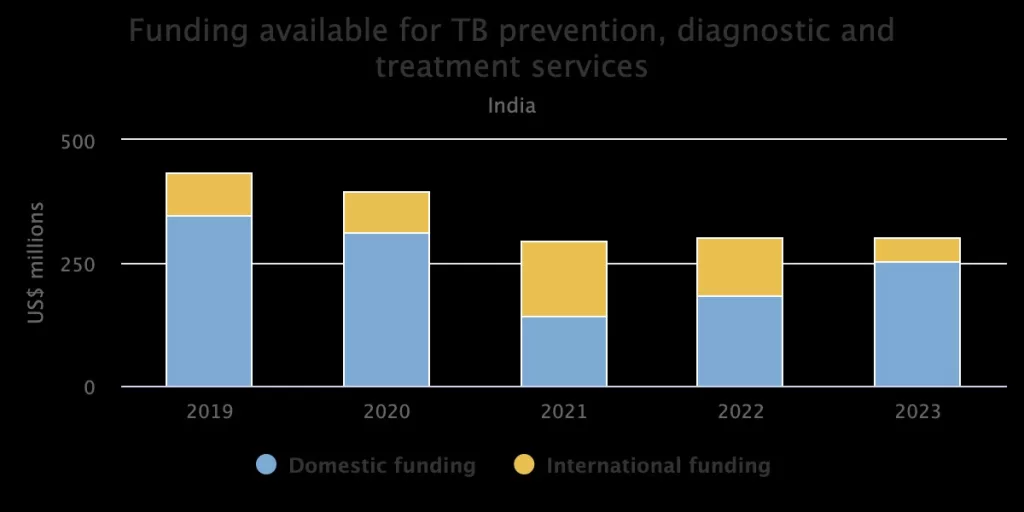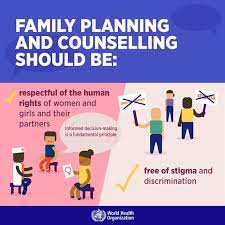India, in its ambitious goal to eradicate tuberculosis (TB) by 2025 — five years before the global target — faces an enormous challenge, according to the World Health Organization’s (WHO) Global Tuberculosis Report 2024. Released on Tuesday, the report highlights that India holds the largest share of the global TB burden, accounting for 26% of all cases worldwide, ahead of other high-burden countries like Indonesia (10%), China (6.8%), the Philippines (6.8%), and Pakistan (6.3%). These five nations collectively comprise 56% of the global TB caseload.
The 2023 statistics mark a grim milestone, as TB resurges as the leading infectious disease killer, surpassing Covid-19. Last year, an estimated 8.2 million new TB cases were reported — the highest annual figure since the WHO began global monitoring of TB in 1995 and a significant increase from the 7.5 million cases recorded in 2022. This rise underscores the enduring challenges of controlling TB, despite having effective tools for its prevention, detection, and treatment.
“The fact that TB still kills and sickens so many people is an outrage when we have the tools to prevent it, detect it, and treat it,” said WHO Director-General Dr. Tedros Adhanom Ghebreyesus. Dr. Ghebreyesus urged countries to intensify their TB control efforts by expanding the use of these tools and adhering to their commitments to end the disease.
TB and Its Persistent Impact on Vulnerable Populations
The WHO report emphasizes that TB disproportionately affects certain demographics, with men comprising 55% of new cases in 2023. Women represented over 30% of cases, while children and adolescents made up about 12%, highlighting the need for targeted prevention strategies.
Additionally, the report identified five primary risk factors fueling new TB infections: undernutrition, HIV infection, alcohol use disorders, smoking (especially among men), and diabetes. Addressing these risk factors requires coordinated action across various sectors. Poverty and economic factors such as GDP per capita were also noted as critical determinants in the spread and prevalence of TB.
India’s Efforts to Close the Diagnosis and Treatment Gap
While India has made strides in closing the gap between estimated and reported TB cases, challenges remain. The report notes a reduction in the global TB reporting gap, narrowing to around 2.7 million in 2023, a marked improvement from 2020 and 2021 when this figure surged to about 4 million due to the Covid-19 pandemic.
India has also prioritized preventive treatment, particularly for individuals living with HIV, who are at heightened risk of TB infection. However, multidrug-resistant TB (MDR-TB) remains a critical public health issue. While the global success rate for treating MDR-TB has reached 68%, only 44% of the estimated 400,000 people who developed MDR-TB in 2023 received both a diagnosis and appropriate treatment.
Call for Increased Funding and Research
The report strongly advocates for enhanced funding for TB research to enable the development and deployment of innovative tools and treatments. Dr. Ghebreyesus emphasized that comprehensive action is required to address the social determinants and risk factors associated with TB, underscoring the necessity of collaborative, multisectoral interventions.
India’s TB elimination target by 2025, if achieved, would be a landmark public health success, setting a precedent for global TB control. However, with the highest global burden, the path ahead demands rigorous action, heightened awareness, and substantial support for TB control programs.
As India continues its efforts, the WHO’s report is a stark reminder of the work that remains to be done, both nationally and globally, to eliminate this age-old disease.

